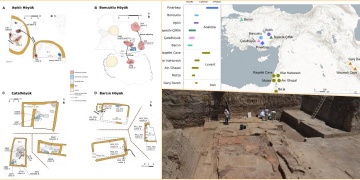
Neolithic Anatolian communities often buried their dead beneath domestic buildings,2 household composition and social structure can be studied through these human remains. Scientists, describe genetic relatedness among co-burials associated with…
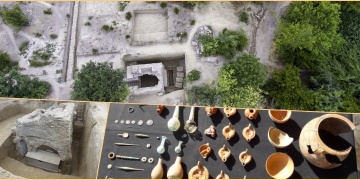
2,000-year-old burial found near ancient city of Laodicea in SW Turkey
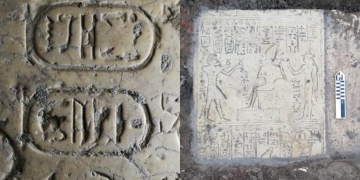
According to the head of the Supreme Council of Antiquities Dr. Mostafa Waziri; The blocks were allegedly part of a shrine dedicated to the god Osiris, likely built during the era of King Ptolemy I.
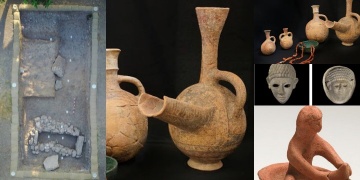
Phoenician family tomb discovered in Israel. Archaeologists have discovered the remains of an entire Phoenician family buried together in a tomb in Achziv, an ancient population center on the Mediterranean coast near the northern city Nahariya.

The rarity of such artefacts in the prehistoric Near East suggests a profound symbolic meaning for this practice and these objects, and provides new insights into the funerary customs and symbolic importance of the use of human body parts during the…

A structure believed to be around 8,000-years-old was unearthed island of Gokceada (Imbros / Imroz) off the western coast of Turkey. Archaeological Excavations in the Ugurlu-Zeytinlik mound in the northwestern province of Canakkale’s Gokceada…
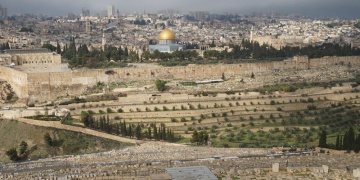
After six years of extensive archaeological excavations, researchers from the Israel Antiquities Authority and Tel Aviv University have uncovered a 220-meter-long section of an ancient street first discovered by British archaeologists in 1894.
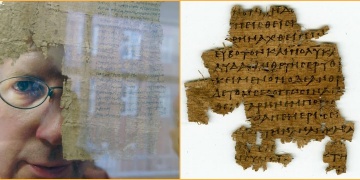
A number of ancient papyri from Oxyrhynchus, part of the Egypt Exploration Society’s collection, (The ancient texts, which date from the 3rd to the 7th Century, are part of the Oxyrhynchus collection who discovered in an Egyptian rubbish dump in…

Aarchaeologists located a tank used to store drinking water, possibly for the needs of the workforce. The team found a scarab ring, hundreds of inlay beads and golden objects which were used to decorate royal coffins. Some of the inlays are shaped in…
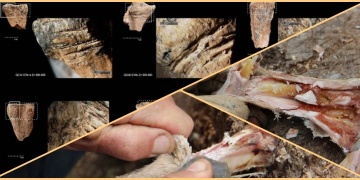
420,000 to 200,000 years ago, prehistoric humans at Qesem Cave were sophisticated enough, intelligent enough and talented enough to know that it was possible to preserve particular bones of animals under specific conditions, and, when necessary,…
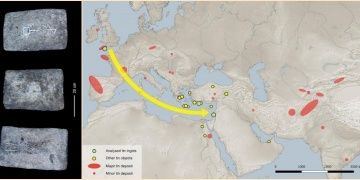
The enigma of Bronze Age tin: Using methods of the natural sciences, they examined the tin from the second millennium BCE found at archaeological sites in Israel, Turkey, and Greece. These findings are of great importance for the archaeological…
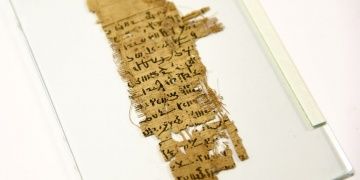
Papyrus fragment part of an ancient puzzle
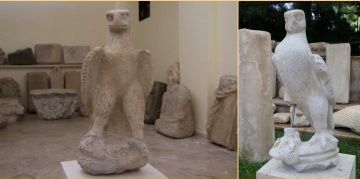
The 70-centimeter eagle statues with their wings closed and their heads turned slightly to the right have wild goats under their claws.
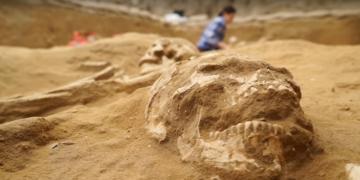
Ancient DNA has shed fresh light light on the origins of the legendary Biblical people who gave their name to mindless thuggery. It suggests they descended from migrants who crossed the Mediterranean and reached the shores of modern-day Israel,…
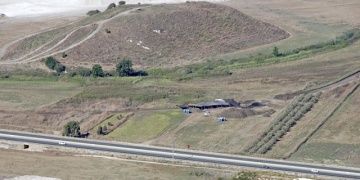
The archaeological site of Ein Qashish in northern Israel was a place of repeated Neanderthal occupation and use during the Middle Paleolithic, according to a stud.
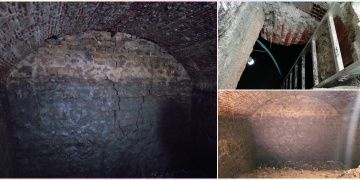
A historical structure believed to belong to the Byzantine era has been unearthed from beneath a restaurant in the northwestern Turkish province of Edirne.

During the Umayyad period, a freed slave would become a “mawla” (client) of their former master, and non-Arab converts would become the client of the person who witnessed their conversion, said a British historian.
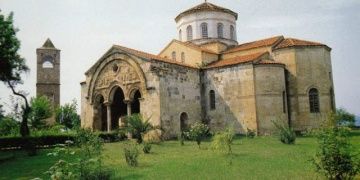
The association of Greek archaeologists sent a letter to the Greek and Turkish culture ministries and UNESCO. Greek archaeologists have expressed concern over the limited access that visitors have to the Hagia Sophia monument in Trabzon, northeast…
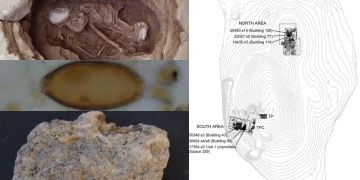
Çatalhöyük is one of the earliest Eurasian sites to undergo palaeoparasitological analysis to date. The results inform how intestinal parasitic infection changed as humans modified their subsistence strategies from hunting and gathering to settled…
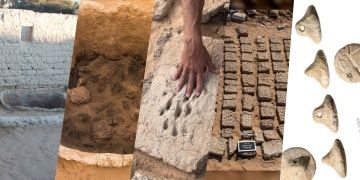
Mysterious 3,000-year-old fingerprints... Fingerprints of Ancient Masons Reveal Advanced Iron Age Construction Technique: Three-thousand-year old fingerprints have been found on ancient bricks at an Iron Age village in Al Ain.
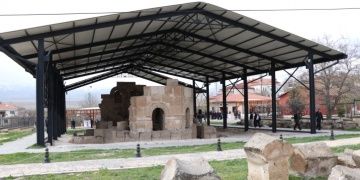
Restoration of early Byzantine church in central Turkey completed

The shape of the pottery confirms that it dates back to more than 332 BC. Underwater find off Lebanon coast points to fleet of ancient Greek ships
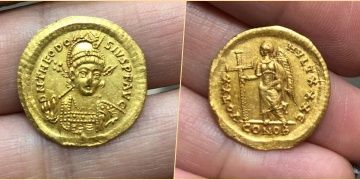
Rare gold coin Byzantine Emperor Theodosius II found by students in Galilee city at northern Israel
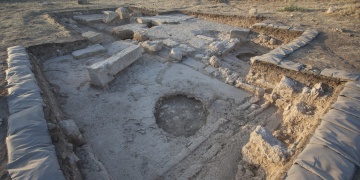
A New Historical Inscription of Sargon II from Karkemish: The cuneiform inscription was found on fragments from three different clay cylinders in 2015 as part of the Nicolò Marchetti-led Turco-Italian Archaeological Expedition at Karkemish.


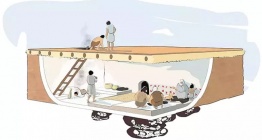

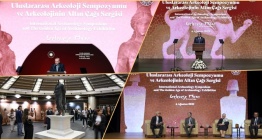
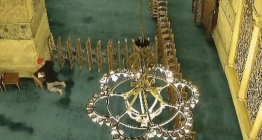
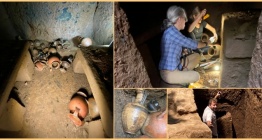
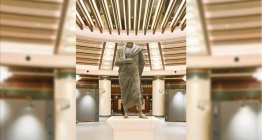


























 Müzeler kültür yuvası olmaktan çıkıp birer "Fotoğraf Durağı"na mı dönüşüyor?
Müzeler kültür yuvası olmaktan çıkıp birer "Fotoğraf Durağı"na mı dönüşüyor?  Bitlis'teki Selçuklu Kalesi'nde Yapılan Kazılarda Sikke ve Seramikler Bulundu
Bitlis'teki Selçuklu Kalesi'nde Yapılan Kazılarda Sikke ve Seramikler Bulundu  Çaltılar Höyük'teki Arkeolojik Kazılar Devam Ediyor
Çaltılar Höyük'teki Arkeolojik Kazılar Devam Ediyor 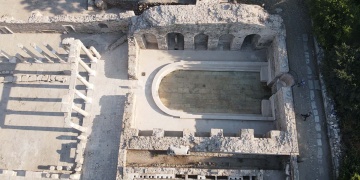 Stratonikeia Antik Kenti'ndeki Roma Hamamında Restorasyon Tamamlandı
Stratonikeia Antik Kenti'ndeki Roma Hamamında Restorasyon Tamamlandı 

